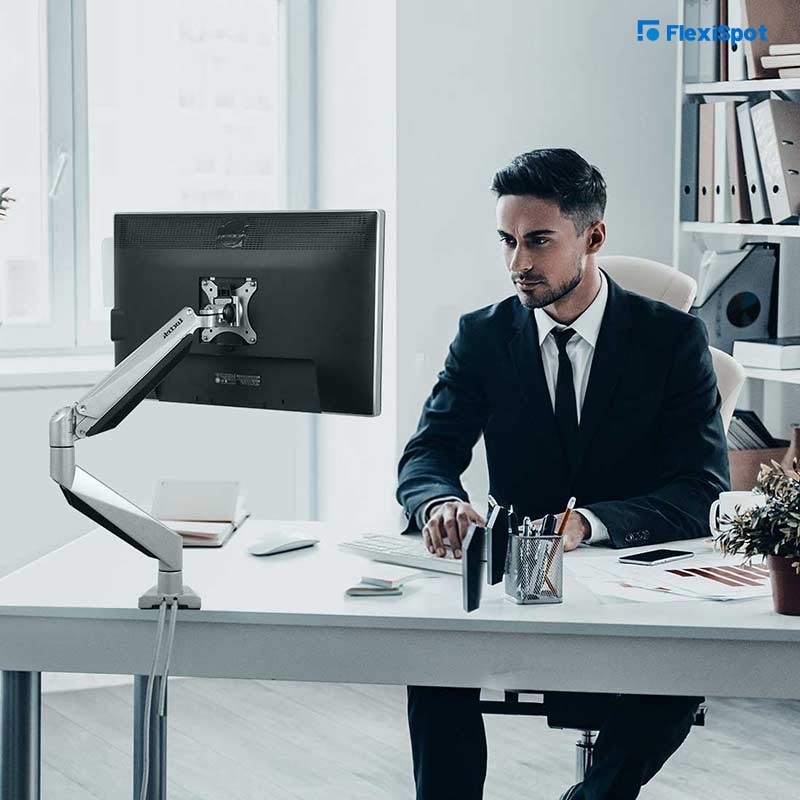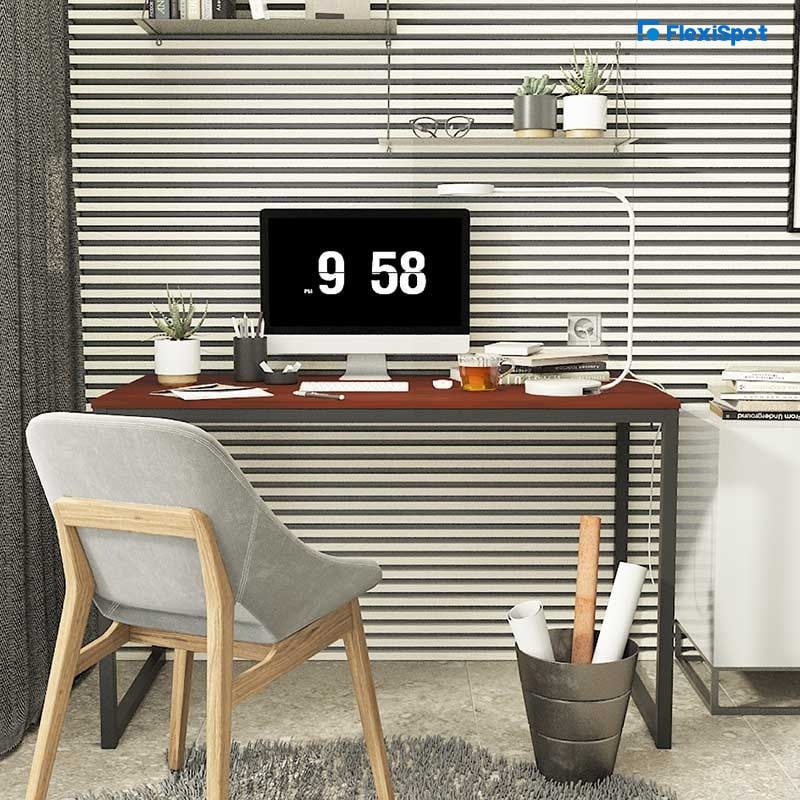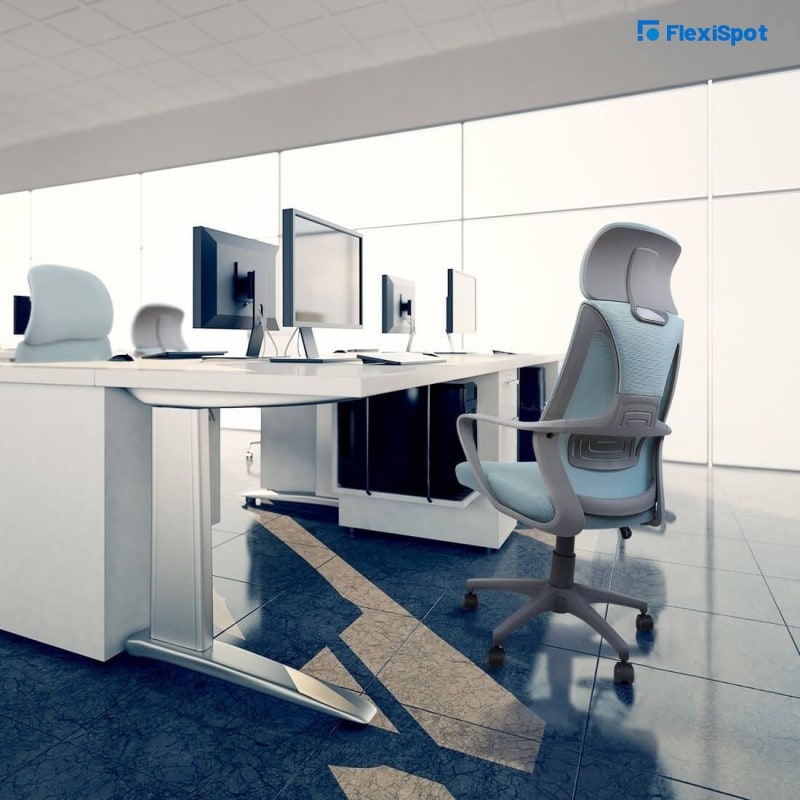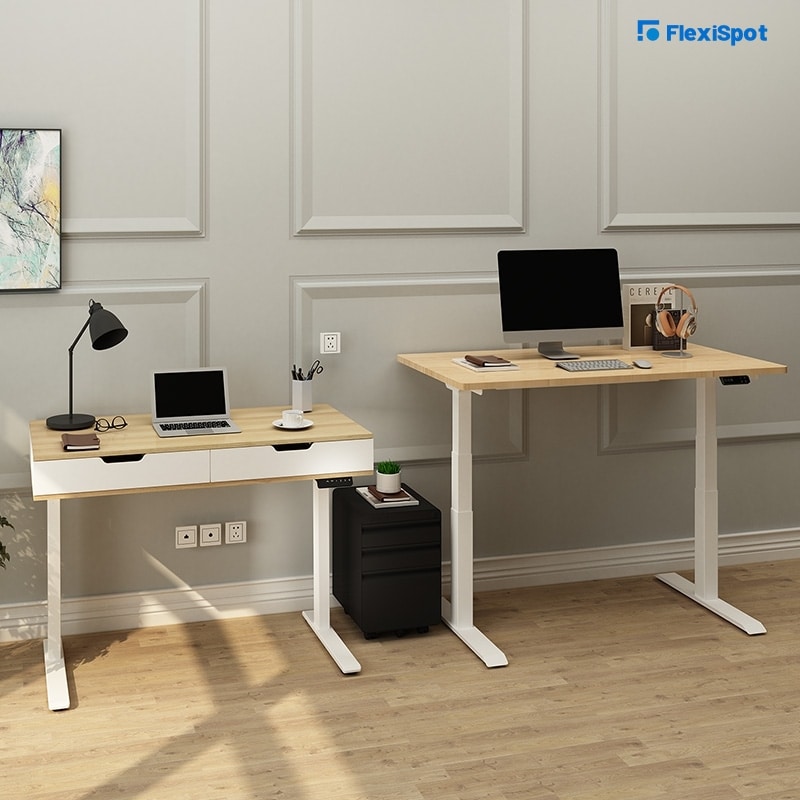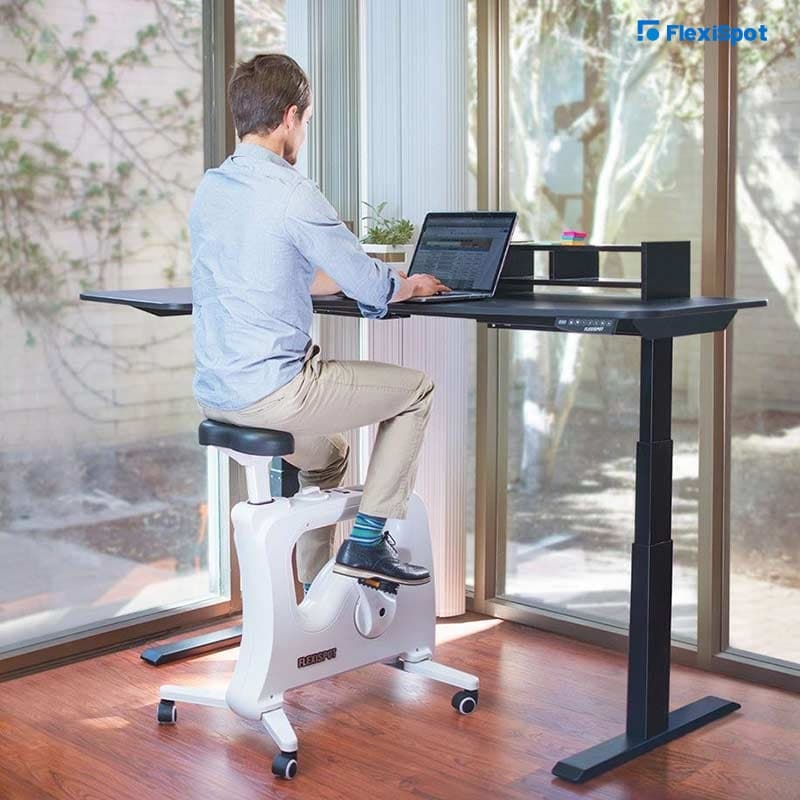Working from home has become a norm for nearly two years now. So, considering the number of hours you spend working in your home daily, it’s vital to have an office that can keep you comfortable and productive. Thus, ergonomics is something that you must pay close attention to. Now, we often rely on whatever we have available, say a table that’s too high or a chair that’s too low. As a result, we sacrifice ergonomics—i.e., efficiency in our working experience. With that said, this article x dos and don’ts for setting an ergonomic office. Sometimes, something as simple as investing in an ergonomic office chair can make a great difference. So, let’s look at your options.
Why Ergonomics Is Important
Before we can begin discussing ergonomic ideas, it’s best to provide some context as to why it is important. Well, most importantly, ergonomics reduces stress. Sitting in one position for long durations can stress your body—both physical and mental stress. Thus, you can stay healthier, reduce the risk of pains in your body, and have a clear head during and out of work.
It improves productivity by preventing you from feeling lethargic by sitting for long in the wrong position. Better productivity allows you to improve the quality of your work and finish it sooner so that you can have enough time and energy for activities outside of work.
Do and Don’ts for Setting an Ergonomic Office
If you want to make a truly ergonomic home office, you will need to invest in some good furniture. However, the benefits make it well worth it. There are, of course, some things that you should avoid as well. Here are some vital tips to keep in mind.
DON’T Hunch Over a Laptop
Most people working from home rely on their laptops because desktop PCs aren’t used by everyone. However, the problem with that is that regardless of what home office desk you have, you’re likely going to hunch over your laptop. Now, while that’s fine for short durations, work-weeks of 40 hours or more can put a strain on your neck, shoulders, and back.
One simple solution includes getting three additional products. These products include an external mouse and keyboard and a stand to elevate your laptop screen to match your eye level. So, you could get a complete portable laptop stand docking station or a monitor stand workstation. Other than this solution, you could invest in an external monitor. That said, it’s best to make sure if the external monitor has an adjustable height in its stand to match your eye level.
DON’T Let Your Feet Dangle
If you feel like standing desks are not for you, then you should ensure that your seating is perfect for you. Thus, a vital ergonomic rule is to prevent your feet from dangling when you’re seated. Dangling feet can stress your lumbar spine. Thus, if your seat is a little high, you can keep your feet planted to the ground by placing some boxes underneath them. Do so until your thighs are almost parallel to the floor. However, your knees should be just slightly lower than your hip for minimal stress on your back.
DO Work at the Right Height
We’ve already mentioned the importance of sitting at the right height. Well, your screen should be level with your eyes when you’re seated straight in your ergonomic office chair. It’s also important to get a good desk like the Fixed Height Table FD1. This way, your elbows can naturally sit flush to the table. You can avoid wrist problems like carpal tunnel syndrome and impingement if your wrist is properly aligned. So, take enough care to ensure that your elbows are at an angle of 90 degrees when seated or standing (at a standing desk) to keep your wrists as straight as you can.
DO Improve the Condition of Your Current Chair
Investing in a high-quality ergonomic office chair doesn’t have to be your first thought. You can make your existing one comfortable for an ideal posture. All you need to do is raise your hips by placing a folding towel or firm cushion under your buttocks, allowing you to increase your spine’s curve. As a result, sitting will feel a lot more comfortable than before. That said, it’s best to consider this solution if your chair keeps your back straight. If not, then an office chair with good lumbar support and a headrest can significantly improve your work from experience.
DON’T Use a Couch as a Workstation
A couch is an ideal piece of furniture for relaxing and lounging, but it won’t get you to work more efficiently. In addition to putting you in lethargic mode, it also keeps your legs and body in one straight position (if you’re lying down on it). Thus, that can cause muscle discomfort or numbness. Also, it makes it particularly hard to sit straight even if you try to do so. Slouching for long periods can cause pains in your back.
DO Consider Using a Standing Desk
If you’ve never given standing desks for home a thought, you may want to because of their benefits with improved productivity and overall health. Standing desks can help you burn many more calories than you would while sitting. This is because more of your muscles are engaged to keep you upright and balanced, making your body work more than it would when you’re seated. There is also a possibility that standing desks may reduce the risk of back pain because of long work hours. Moreover, research shows that employees who used standing desks at work experienced improved moods and overall wellbeing than those seated.
So, there’s no reason why you shouldn’t give it a try, especially if you’ve been feeling uncomfortable sitting in your chair all day. Many different types of standing desks are available, some of which are adjustable and have spacious built-in drawers. If you fear that your feet will begin to hurt by standing for extensive durations, then you could benefit from an anti-fatigue mat for standing desks.
DO Keep Your Monitor at an Appropriate Distance
A simple yet important ergonomic tip is to place your monitor at an appropriate distance. The ideal distance is about an arm’s length from you. This way, you can minimize strain on your eyes by preventing them from being too close or far from you.
DON’T Skip or Delay Lunch
While this tip may not have anything to do with how you’re seated at your home office desk, it is an important productivity tip nevertheless. So, even though you may be swarmed with work, it’s crucial to your health to have a lunch break. It’s not a good idea to simply rely on snacks, and it’s an even worse idea to skip your meal altogether. So, you should take time out to prepare and eat a nutritious meal during your work hours. At the same time, keep yourself hydrated so that your body has all it needs to function at its best. You could fill a bottle of water and place it on your home office desk to ensure that you keep sipping on water. You’re more likely to take care of such things if they’re easily accessible and right in front of you when working.
DO Follow the 20-20-20 Rule
If you haven’t heard about it yet, the 20-20-20 rule can help prevent your eyes from getting strained while working. So, it’s a pretty straightforward exercise. All you have to do is look at something 20 feet away from you for 20 seconds every 20 minutes you spend looking at your computer screen. This exercise prevents eye strain by giving those muscles a much-needed break.
DO Customize Your Workstation to Fit Your Exact Needs
If you share a workstation with someone else, make sure that you adjust your monitor distance, monitor height, chair height, feet position, etc., every day before you start working. You may be tempted to leave it as is to avoid going through the extra bit of work to make it comfortable. However, these small adjustments may make a great difference. If you’re the only one at that workstation, still double-check your adjustments before working.
Last Few Words
While it certainly helps to have an ergonomic home office desk, some simple solutions can improve your comfort and productivity greatly. Remember to stand up and walk around now and then during a work shift. This way, you’ll ensure your muscles get some activity to stay healthy, you’ll improve blood circulation, and you can help reduce the risk of spine pain. As a result, you’ll also be able to stay more focused on your work.
For more options on ergonomic home office furniture and accessories, visit Flexispot today! There are currently some fantastic discounts on these amazing products.
